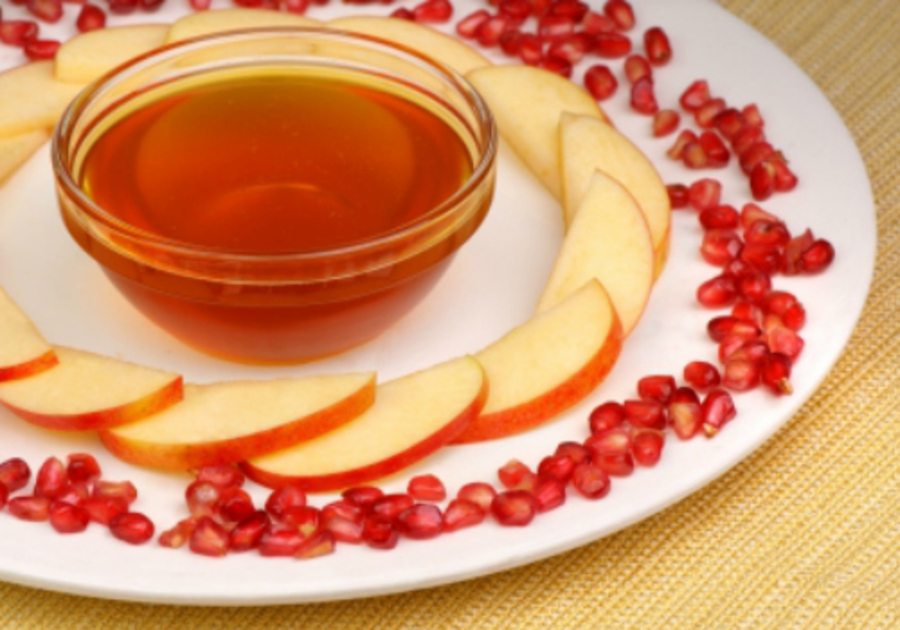Rosh Hashanah, the start of the Jewish New Year, begins this year at sundown on Friday, September 18 and lasts until sunset on Sunday, September 20. It is steeped in Jewish rituals and traditions, family time and Jewish memories. I hope this article helps you to share in the celebrations of your Jewish friends and learn more about their culture and traditions.
Traditionally, Rosh Hashanah is celebrated with prayer, blowing of the Shofar (a Ram's Horn), holiday meals with some special foods and a Tashlich or Casting Off of Sins Cermony.
THE SPECIAL NEW YEAR GREETING
On Rosh Hashanah, and the days before and after, Jews wish each other a sweet new year, or in Hebrew "L'Shanah Tovah Tikatevu", translated as "May you be written in for a good year". They send cards or call each other (some people email, Facebook, tweet, etc.). A fun project to do with the kids is to create a few New Year cards and share them with family, friends, and seniors at the local senior center and assisted living facility.
THE SHOFAR
One of the key traditions of this holiday is to hear a Shofar blown. The loud noise can be scary for some, and other kids love it. The idea behind the Shofar being blown is that it is a wakeup call to start atoning for the sins/mistakes of the previous year because Yom Kippur, the day of atonement, is close. It is important to keep your child quiet when they blow the Shofar – from the first blessing until after the shofar is blown, so everyone can hear it. Kids can make their own Shofar at http://joyfuljewish.wordpress.com/2011/09/18/blow-your-own-paper-shofar/.
THE FOODS OF THE HOLIDAY
Holiday meals provide a wonderful opportunity for family to get together, enjoy each other’s presence and reflect about the past year and be optimistic for the upcoming year. Some fun foods to enjoy while celebrating this holiday are apples dipped in honey, pomegranates, sweet carrot tsimmes, round challah or egg bread with raisins and honey cakes.
The Round Challah is served instead of the usual braided challah/egg bread. The special round challah reminds us of the roundness of the year and tells us that the coming year will be full and fruitful. (Some people also add sweet raisins to the Challah).
Dip slices of a sweet apple (not a green, tart apple) into sweet honey, for a sweet new year. There is a special blessing and prayer said when eating the apple and honey.
Pomegranates are symbolic of ‘plenty’ since they contain so many seeds. Carrots in the Yiddish language are called ‘merren’. This word also means ‘more’ in Yiddish. We want more of all the good things in life: More happiness, more health, and more success. Many people prepare the carrots in a sweet honey sauce (called tsimmes).
THE CEREMONY OF TASHLICH
Traditionally, on the afternoon of the first day of Rosh Hashanah, Jews walk to a river or a place of water. It is best if there are fish in the water. At the river, they say a special prayer as a reminder about doing better in the next year. They symbolically shake out their pockets, as if they are emptying them of crumbs and throwing them to the fish. (The translation of Tashlich means ‘throw’.) This is a reminder to think about starting off the year without mistakes, to begin the year with a clean slate.
If you'd like to learn more about Rosh Hoshanah or locate local services, please visit http://www.chabad.org/holidays/JewishNewYear/template_cdo/aid/4644/jewish/Rosh-Hashanah.htm
For child-appropriate explanations, videos, stories, crafts, recipes, and more, visit Chabad Rosh Hashanah for Kids.
Thank you to Sharon Rosenthal, Macaroni Kid Camarillo-Ventura-Oxnard CA Publisher, for providing the majority of this article.



